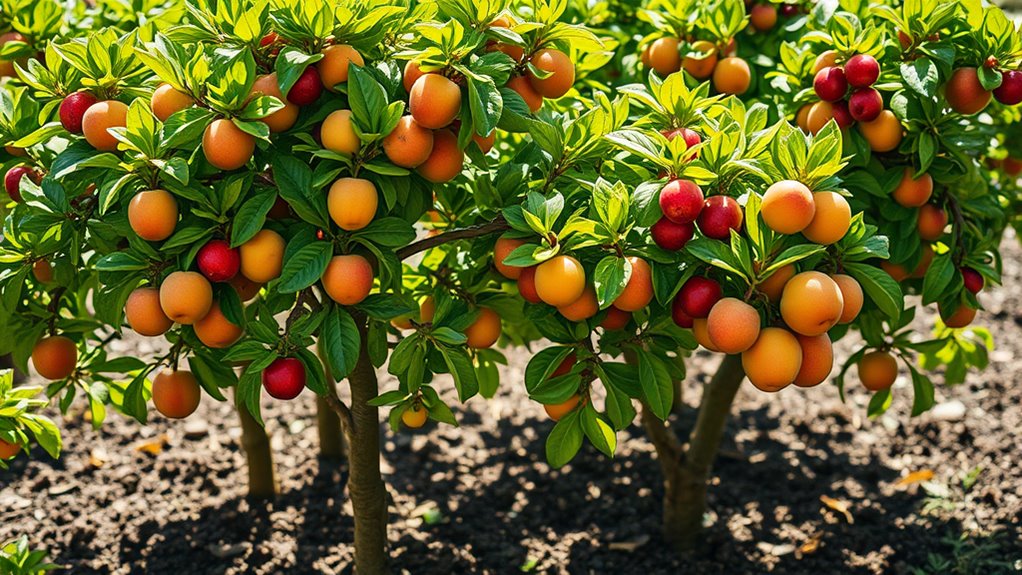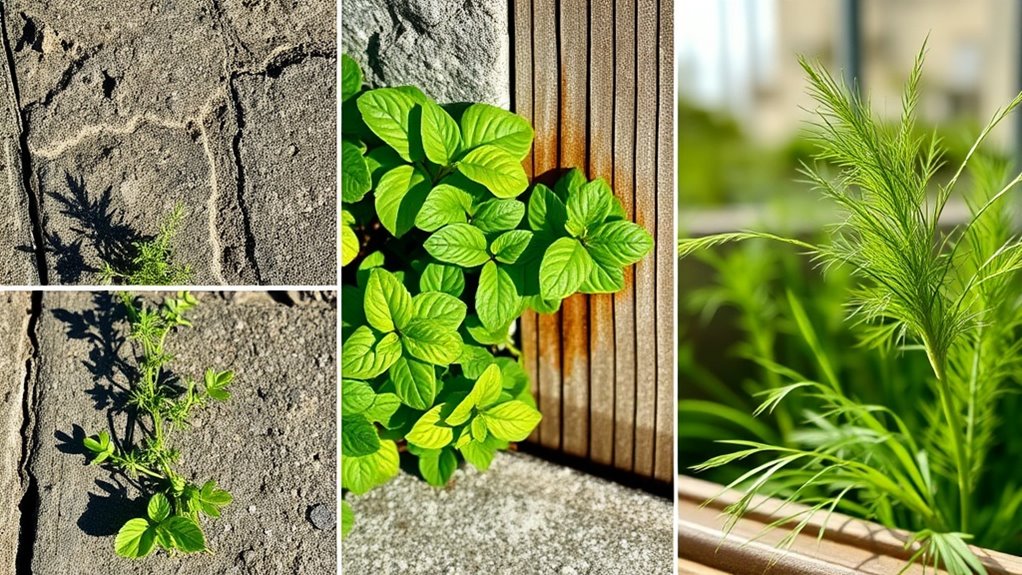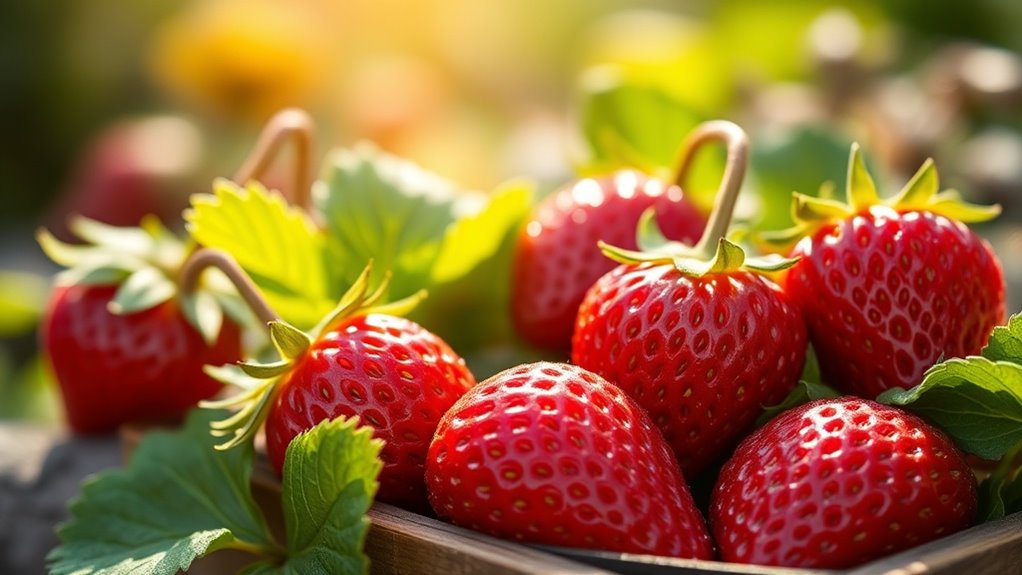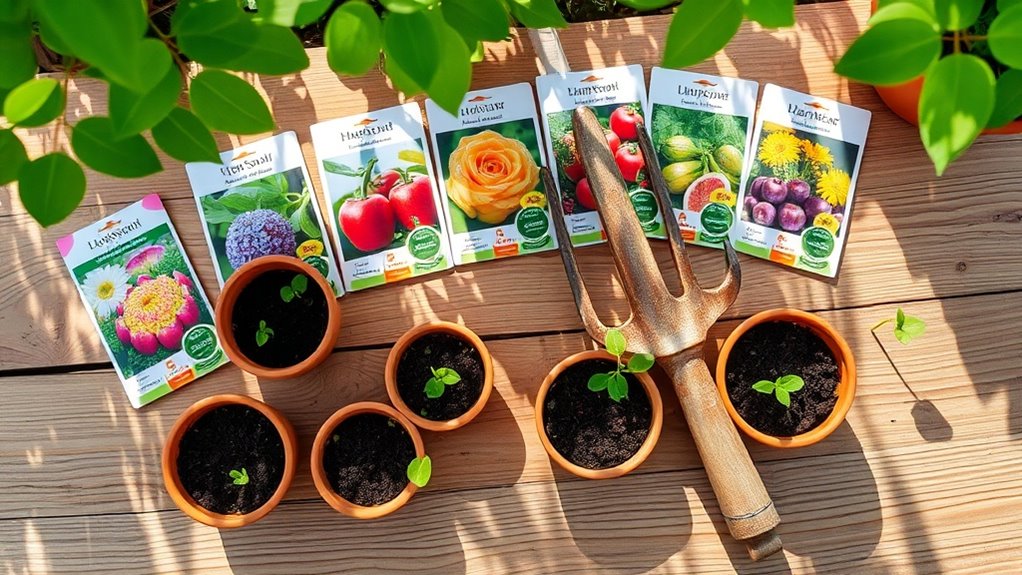This Trick Makes Small Fruit Trees Produce More
Did you know that properly pruned small fruit trees can produce up to 30% more fruit than those left unpruned? To achieve this, you need to understand the essential care practices that go beyond just cutting branches. By mastering strategic pruning and integrating other key factors, you can significantly enhance your tree’s yield. Let’s explore how to optimize your small fruit trees for a more fruitful harvest.
Key Takeaways
- Ensure your small fruit trees receive at least six hours of sunlight daily to maximize fruit production.
- Regularly prune during dormancy to stimulate healthy growth and prevent overcrowding of branches.
- Incorporate organic matter into the soil to improve structure and nutrient availability for enhanced fruit yield.
- Encourage pollination by planting nearby flowers and selecting compatible varieties that bloom simultaneously.
- Implement a consistent deep watering routine to promote strong root development and overall tree health.
Understanding the Needs of Small Fruit Trees
How do you ensure your small fruit trees thrive and produce abundantly?
Start by understanding their specific needs.
Ensure they receive adequate sunlight—at least six hours daily—to boost small fruit yield.
Regular watering is essential, particularly during dry spells; aim for deep watering to encourage root growth.
Soil quality plays a crucial role, so test pH levels and amend with organic matter as needed.
Fertilizing with a balanced mix can enhance nutrient availability.
Additionally, monitor for pests and diseases, as early intervention can prevent damage and promote healthier, more productive trees.
Meeting these needs creates a strong foundation for abundant fruit production. Furthermore, employing effective techniques can significantly enhance the yield of your small fruit trees.
Optimal Pruning Techniques for Increased Yield
To maximize your small fruit trees’ yield, you need to master optimal pruning techniques.
Start by understanding the best timing for pruning, selecting the right tools, and employing effective shaping methods. Additionally, consider choosing fruit varieties that are specifically suited for small spaces, as they can significantly enhance your gardening experience. These strategies will ensure healthier growth and more abundant fruit production.
Timing for Pruning
When’s the best time to prune small fruit trees for optimal yield?
Timing is crucial, and the best window is late winter to early spring, just before new growth begins.
This encourages healthy, vigorous growth and maximizes fruit production.
Consider these key points:
- Dormancy: Pruning during dormancy minimizes stress on the tree, allowing it to recover quickly.
- Temperature: Aim for a dry, mild day to prevent disease and ensure clean cuts.
- Flower Buds: Be mindful of the tree’s flowering cycle; pruning too late can remove potential fruiting buds.
Pruning Tools Needed
Having the right pruning tools is essential for maximizing the yield of your small fruit trees.
Start with bypass pruners for clean cuts on live branches, minimizing damage and promoting quicker healing.
A lopper is crucial for reaching thicker branches overhead, while a pruning saw handles larger limbs.
Don’t forget gloves to protect your hands and safety goggles for eye protection.
Consider a pole pruner for those hard-to-reach areas.
Finally, ensure all tools are sharp and well-maintained; dull tools can tear bark and lead to disease.
With the right equipment, you’ll set your trees up for optimal growth and fruit production.
Techniques for Shaping
How can you effectively shape your small fruit trees for optimal yield?
Focus on strategic pruning techniques that enhance light penetration and airflow.
Here are three key methods to consider:
- Thinning Out: Remove crowded branches to prevent disease and promote healthy growth.
- Heading Cuts: Trim back branches to encourage bushier growth and more fruiting sites.
- Canopy Management: Shape the tree to maintain an open center, allowing sunlight to reach all parts of the tree.
Implementing these techniques won’t only improve your tree’s structure but also maximize fruit production, ensuring a bountiful harvest.
The Importance of Soil Quality and Nutrition
Soil composition directly affects your small fruit trees’ growth and productivity. You’ll need to ensure a balanced nutrient profile, as deficiencies or excesses can hinder fruit development. Additionally, incorporating essential soil ingredients can significantly enhance the overall health and yield of your trees.
Soil Composition Matters
What makes soil composition such a crucial factor in the productivity of small fruit trees?
The right soil mix ensures your trees receive adequate support, moisture retention, and nutrient availability.
Here’s what you need to consider:
- Texture: A balanced combination of sand, silt, and clay promotes healthy root growth.
- pH Level: Ideally, aim for a slightly acidic to neutral pH (6.0-7.0) to optimize nutrient absorption.
- Organic Matter: Incorporating compost enhances soil structure and provides essential nutrients.
Nutrient Balance Essentials
A balanced nutrient profile is vital for the health and productivity of small fruit trees.
You’ll want to focus on key nutrients: nitrogen promotes leafy growth, phosphorus supports root development and flowering, and potassium enhances fruit quality and disease resistance.
Testing your soil is essential; it reveals nutrient deficiencies or excesses.
Amend your soil with organic matter, such as compost, to improve nutrient availability and microbial activity.
Additionally, consider using slow-release fertilizers tailored for fruit trees.
Regularly monitor your trees’ health and adjust your nutrient regimen as needed, ensuring they receive the right balance for optimal growth and fruit production.
Effective Pollination Methods for Small Fruit Trees
Effective pollination is crucial for maximizing fruit production.
Here are some methods to enhance pollination:
- Encourage Pollinators: Plant flowers nearby to attract bees and butterflies, which are vital for transferring pollen.
- Hand Pollination: Use a small brush or cotton swab to manually transfer pollen from male to female flowers, especially in low-pollinator areas.
- Choose Compatible Varieties: Select different cultivars that bloom simultaneously, ensuring cross-pollination for better fruit set. Additionally, consider growing dwarf fruit trees that are specifically designed for small spaces, as they often produce more fruit per square foot.
Watering Strategies to Maximize Fruit Production
Effective watering strategies are essential for maximizing fruit production in small fruit trees. Start by establishing a deep watering routine, applying water slowly to encourage root depth. Aim for about 1-2 inches of water weekly, adjusting based on rainfall.
Consider using a soaker hose or drip irrigation to maintain consistent soil moisture without waterlogging. Early morning is the best time to water, reducing evaporation and ensuring trees absorb moisture effectively.
Mulching around the base helps retain soil moisture and regulates temperature. Always monitor soil moisture levels, as overwatering can be as detrimental as underwatering, impacting fruit yield and overall tree health. Additionally, understanding ideal watering schedules can help you fine-tune your approach to ensure optimal growth and fruit production.
Pest and Disease Management for Healthy Trees
While small fruit trees can thrive with proper care, pest and disease management is crucial to ensure their health and productivity.
To keep your trees flourishing, follow these essential practices:
- Regular Monitoring: Check your trees weekly for signs of pests or disease, such as discoloration or unusual growth patterns.
- Integrated Pest Management (IPM): Employ a combination of biological, cultural, and chemical strategies to control pests while minimizing harm to beneficial insects.
- Sanitation and Pruning: Remove fallen fruits and debris that can harbor pests and diseases, and prune dead or infected branches to promote airflow and health. Additionally, consider using natural sprays to deter common pests like aphids effectively.
Implement these strategies for thriving fruit trees!





